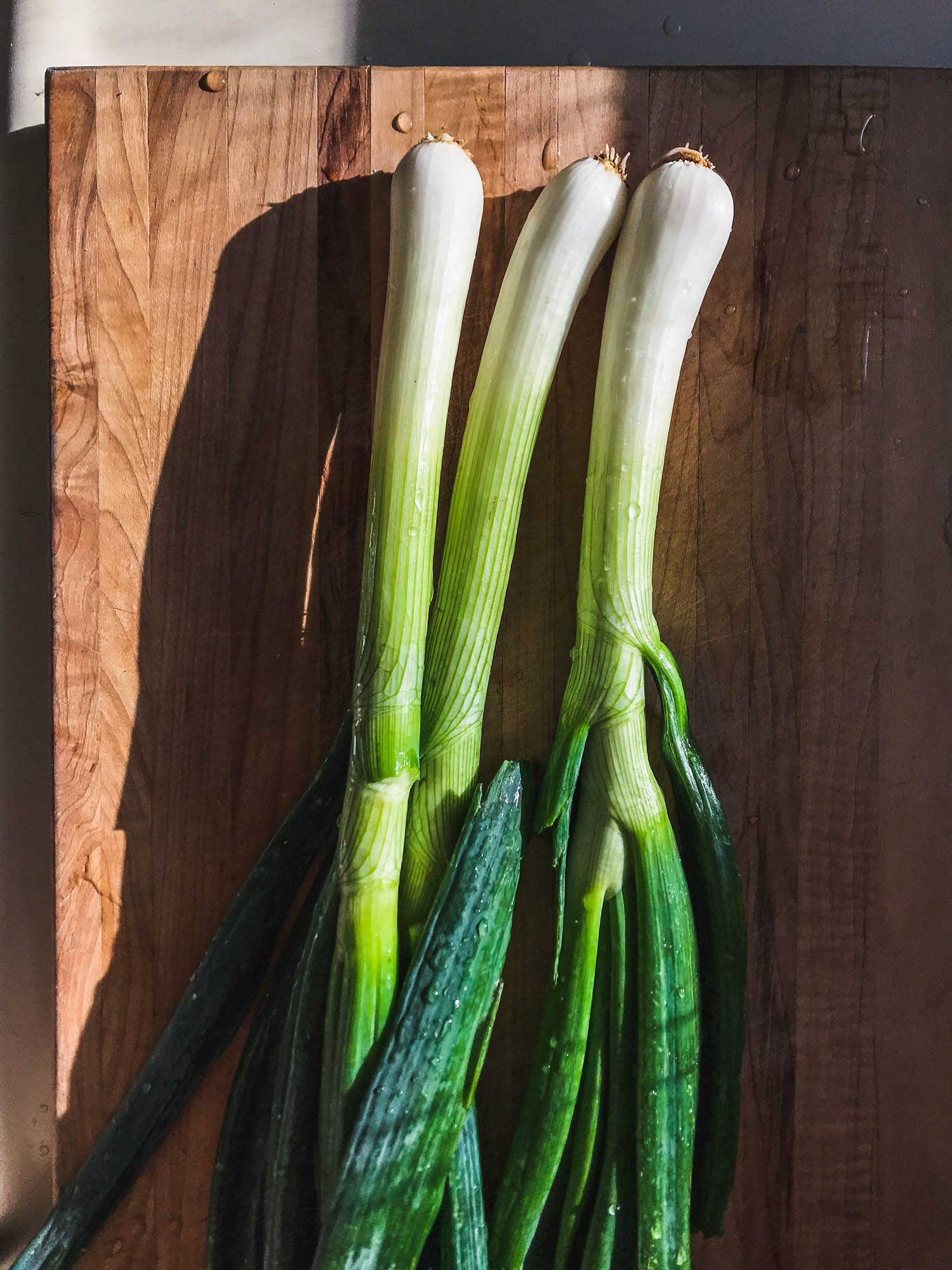Spring Onion Socca
Socca has got to be one of my favorite, quick dinners. It has a delightfully brief list of ingredients and requires very little active cooking time. Socca (as it’s called in Nice), also known as farinata or torta di ceci, is essentially a savory chickpea flour pancake, which originated in Liguria and spread to some neighboring regions as well.
I love socca as a blank slate, since it can be served topped with or accompanied by so many things, depending on the season and what’s on hand. I also like adding veggies right into the batter, and upping the flour to make a bit of a thicker pancake. Neither step is traditional, but delicious nevertheless. In the spring, I love adding in spring onions. Their beautiful, powerful allium flavor makes for such a lovely addition to the peppery, chickpea flavor of the pancake. I love the flavor combination so much that I find myself making socca most often during spring onion season.
Spring Onion Socca
serves 2-4
1½ cups chickpea flour
1 teaspoon sea salt, plus more for the onions
freshly ground black pepper
1½ cups water
4 tablespoons olive oil, plus more for oiling the skillet
1 large or 2 small (skinny) spring onions, sliced (green tops included)
Add the chickpea flour to a medium bowl, along with the salt and plenty of pepper. Slowly stream in the water, whisking simultaneously to avoid lumps, until you have a smooth batter. Add the 4 tablespoons of olive oil, mix it in. Let the batter sit for at least 30 minutes or up to overnight, for the flour to hydrate.
Heat a 12" cast iron skillet over medium heat and add enough oil to lightly coat the bottom. Add the spring onions, along with a pinch of salt, and saute until soft and jammy, about 15 minutes. Let the onions cool a bit, then transfer them to the bowl with the batter, mixing to combine. Scrape up any stuck or brown bits at the bottom of the skillet.
Preheat the oven to 450° F (230° C) and put the cast iron skillet in the oven while it's preheating. Once preheated, remove the skillet from the oven and add more olive oil, gently tilting the skillet to coat the bottom. Add the batter and spread it out into an even layer. Put the skillet in the oven and bake for 30-35 minutes, or until the edges of the socca are brown, the top is dry to the touch and slightly golden, and the inside is custardy and set. You might have to adjust the baking time if using more or less spring onions or other vegetables, since they all vary in their moisture content. Remove the skillet from the oven, let the socca cool a bit and set for a few minutes, then cut into triangles and serve.
Intuitive Cooking Takeaways
Socca is the perfect recipe for intuitive cooking, since the recipe is so easy to memorize. It’s always 1:1 chickpea flour to water, plus salt, plenty of pepper, and enough olive oil to make the batter look lush and glossy (about 3-4 tablespoons). I usually do 1 cup flour and water for a thinner pancake and 1 1/2 cups for one that’s a bit thicker and sturdier.
If you have a high-speed blender like a Vitamix/Blendtec, or a grain mill, you can make your own chickpea flour by grinding dried chickpeas on high until fine.
If you don’t have spring onions, you can use regular onions, ramps, or even spring garlic.
If you don't have a cast iron skillet, you can cook the onions in a regular skillet and bake the socca in a baking dish.
I love to have the socca as is, but some people (like my husband) find it to be too dry on its own and prefer it served with sauces. You can try it with pretty much any sauce you enjoy, like aioli, avocado sauce, green herb sauce, salsa verde, tahini sauce, etc. Also, topping the socca with juicy raw or roasted vegetables like tomatoes, cucumbers, radishes, eggplant, peppers, etc. can be delicious.





